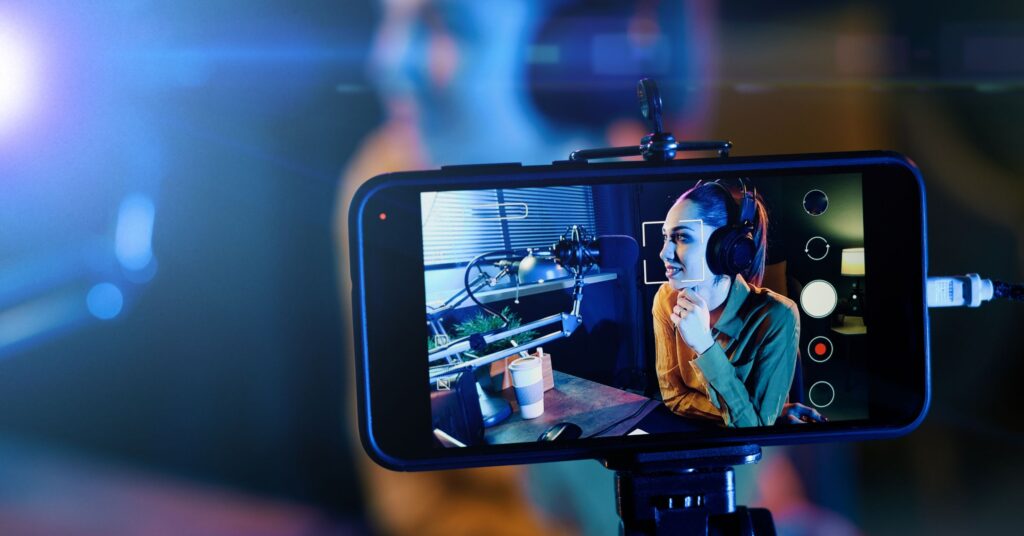Table of Contents
The world of email marketing has been revolutionized, much like the world itself, in the wake of the COVID-19 pandemic. Businesses are recognizing the need for a more personalized approach to connect with customers. Enter hyper-personalization, the future of email marketing. Leveraging artificial intelligence, it promises to deliver content that is not just segmented, but individually tailored for every recipient.
Did you know that 80% of buyers are more likely to reach for their wallets when a brand provides personalized experiences?
The advancements in technology, particularly the integration of Artificial Intelligence (AI), have played a significant role in this transformation. Marketers often use AI to enhance their email campaigns for improved outcomes.

AI-powered tools can help email marketers write compelling copy, create engaging visuals, provide hyper-personalization, and create automations. They can help you understand your customer lifecycle, segment your email list smartly, and even clean up your email list.
The New Norm: Hyper-Personalization
Hyper-personalization is not just a buzzword. It’s the new territory email marketing is charting. It’s about having a dialogue with your customers, one that’s so tailored and relevant, it feels like you’re speaking just to them. It goes beyond the traditional “Dear {First Name}” format. Hyper-personalization digs deep into behavioral data, purchase history, and browsing patterns to deliver highly relevant content to each individual user.
Emails that include personalized call-to-actions can skyrocket your conversion rates by a staggering 202%.
AI-Driven Email Automation Example
So, what does this look like in a marketing campaign? Let’s take a hypothetical clothing brand, ‘Fashion Forward’, as an example. They’ve embraced hyper-personalization in a big way.

1. The Welcome Email
A new subscriber, Jennifer, signs up for their newsletter. She doesn’t just receive a general welcome email. She gets one that highlights the type of clothing she browsed during her site visit – summer dresses.
This level of personalization is only possible because Fashion Forward uses AI to analyze Jennifer’s browsing behavior, purchase history, and more. The technical setup for such advanced email marketing automation hinges primarily on the integration of AI and data collection tools.

When Jennifer browses the site, her actions are tracked, noting her preference for summer dresses. This information is captured by an AI-driven system that not only identifies user behavior but can learn and adapt from it.
This user-specific data is then fed into an email automation platform. The AI system designs an email with a dress selection tailored for Jennifer, highlighting the summer dresses she showed interest in.
Stay tuned, we’re diving into the technical aspects of this topic later in the piece.
2. The Follow Up
A week later, Jennifer receives an email showing summer dresses that are on sale, along with complementary accessories. It’s like Fashion Forward read her mind!
Setting up the automation for the “Follow Up” email requires a combination of data analysis, personalized content generation, and scheduled email delivery. Firstly, mechanisms should be set up to track Jennifer’s interactions with Fashion Forward, like her browsing history, past purchases, and preferences. This data will form the basis of personalized recommendations. The system uses machine learning to predict Jennifer’s interests from data.

Once the data analysis is complete, the automation system generates tailored content for the email, featuring the summer dresses that match Jennifer’s style and budget, along with relevant and complementary accessories. Email customization techniques create dynamic content for a personalized shopping experience.
Finally, the system schedules the email delivery for precisely one week after Jennifer’s last interaction with the website, ensuring the timing is optimal for her shopping decision-making process.
3. The Personal Touch
When Jennifer abandons a checkout with a summer dress in her cart, she later receives an email reminding her of the abandoned item. Additionally, it offers her a time-limited discount code to sweeten the deal.

Setting up the “Abandoned Checkout” email with a custom discount code requires using AI to track user behavior, send the email, and create dynamic content. Firstly, the system uses AI-driven analytics to track user interactions on the website, such as Jennifer adding a summer dress to her cart but not completing the purchase. The data is analyzed to detect cart abandonment and linked to Jennifer’s profile.
Once the system detects the abandoned checkout, AI algorithms generate a personalized email for Jennifer. This email shares details about the forgotten item, its perks, and offers a temporary discount code to encourage buying it. The dynamic content generation ensures Jennifer receives a unique discount code tailored to her shopping preferences and history.
The AI automation schedules the email to be sent after abandonment, thereby re-engaging Jennifer with the summer dress and converting the abandoned cart into a sale. For instance, AI could determine that Jennifer is more likely to complete her purchase on a weekend, adjusting the timing of the follow-up email accordingly.
The Technical Setup for Hyper-Personalized Automations
The secret sauce behind this magic trick of hyper-personalization lies in the technical setup. It’s a mix of marketing automation tools, CRM systems, with a hint of artificial intelligence (AI) and machine learning (ML).
- User Behavior Tracking: The first step is to track Jennifer’s actions on the site. This can be achieved using web analytics tools like Google Analytics, Adobe Analytics, or Mixpanel. These tools can track user behavior such as pages visited, time spent on each page, clicked links, and more. This data can later be used to understand what content is engaging Jennifer the most.
- AI-Driven System for User Behavior Analysis: The next step is to use an AI-driven system that can analyze Jennifer’s behavior and learn from it. This system should be able to identify patterns in Jennifer’s actions, such as her preference for summer dresses. There are several AI platforms that can do this, such as IBM Watson, Google’s AI Platform, SAS Customer Intelligence 360, or Microsoft Azure AI. These platforms can use machine learning algorithms to analyze user behavior and adapt to it.
- Data Integration: The user-specific data collected and analyzed by the AI system needs to be integrated with an email automation platform. This can be done using APIs or middleware software like Zapier or MuleSoft. These tools can automate the data transfer process between different software applications.
- Email Automation Platform: The integrated data is then used by an email automation platform to design and send personalized emails. Platforms like Mailchimp, Recapture, Brevo, or ActiveCampaign allow for the creation of automated email campaigns based on user behavior. They can use the data from the AI system to create an email with a selection of summer dresses that Jennifer showed interest in.
- AI for Email Content Creation: The AI system can also be used to design the content of the email. AI tools like Phrasee or Persado can generate personalized email content that is tailored to Jennifer’s preferences.
- Email Delivery: The email automation platform then sends the email to Jennifer. It can also track whether Jennifer opens the email and clicks on any links, providing further data that can be fed back into the AI system to refine future emails.
Interactive Elements: Enhancing the Email Experience
Emails are no longer static pieces of text and images – interactive elements will soon become essential parts of the future of email marketing. Interactive elements not only make your emails more engaging but also increase the chances of conversion. They provide a seamless user experience. No need for separate landing pages – everything’s at their fingertips.
Here are some examples of interactive elements:
- Quizzes: Quizzes can help you learn more about your subscribers and their interests. You can use quizzes to collect feedback, segment your subscribers, or promote your products or services.
- Polls: Polls are a great way to get your subscribers’ opinions. You can use polls to gather feedback, gauge interest in new products or services, or simply keep your subscribers engaged.
- Product carousels: Product carousels are used to showcase your products or services. You can use product carousels to promote new products, cross-sell to existing customers, or simply make it easier for your subscribers to find what they’re looking for.
- Videos: Videos can serve as perfect tools to showcase your products, enlighten your subscribers, or simply add a dash of fun to your emails.
Privacy and Data Protection: Building Trust
The future or email marketing is not without its challenges – paramount among them is the safeguarding of privacy and data protection. Companies and marketers must fully comply with privacy regulations. Ensuring the secure handling of customer data is not just a necessity, but a non-negotiable priority.
The bond between you and your subscribers thrives on trust, and trust is built on transparency. So, keep your subscribers in the loop – let them know exactly how their data is being used and safeguarded. It’s all about communication. Ensure you articulate your privacy policy in a way that’s crystal clear. And remember, everyone loves choices. Your subscribers are no different – give them the right to control their preferences and the freedom to opt out whenever they wish.

Tips to keep in mind:
- Obtain consent: Before you can send marketing emails to someone, you must first obtain their consent. This means that they must explicitly opt-in to receive your emails.
- Be transparent: When it comes to handling personal data, transparency is key. It’s essential to openly communicate how you gather, utilize, and distribute this sensitive information. To do this, you need to craft a crystal-clear privacy policy that leaves no room for misinterpretation.
- Give people control: Empower your audience by letting them take the reins of their personal data. It’s critical that they have the choice to opt out from your emails and request the removal of their personal data.
- Protect data security: You must take reasonable steps to protect the security of personal data. This means that you must use appropriate security measures to protect your email list from unauthorized access, use, or disclosure.
- Use a reputable email service provider: A reputable email service provider will have strong security measures in place to protect your email list.
- Use clear and concise unsubscribe instructions: Make it easy for people to unsubscribe from your emails. Your unsubscribe instructions should be clear and concise, and they should be prominently displayed in all of your emails. Because, after all, nobody likes to play hide and seek with the ‘unsubscribe’ button.
- Use double opt-in: Double opt-in is a process where people must confirm their subscription to your email list before they can start receiving your emails. This is an additional layer of protection that helps to ensure that only people who are actually interested in receiving your emails are added to your list.
- Encrypt your email list: Encrypting your email list will help to protect it from unauthorized access.
- Be aware of the latest privacy regulations: There are a number of privacy regulations that you need to be aware of, such as the General Data Protection Regulation (GDPR) and the California Consumer Privacy Act (CCPA).
To ensure data security, invest in robust security measures, such as encryption and secure storage systems. Make a habit of regularly reviewing and updating your security protocols. Stay one step ahead of any potential threats, and keep your data safe.
FAQ
What is hyper-personalization in email marketing?
Hyper-personalization in email marketing means tailoring your emails to meet the individual needs and preferences of each customer using AI, machine learning, and automated tools. This is not just about embedding their name in the subject line, it’s about recommending products that they’ll love, leveraging their browsing history on your site.
How does data analytics contribute to personalization?
Data analytics provides insights into customer behavior, which can be used to create personalized experiences. It transforms raw data into insightful knowledge, helping businesses to not only understand their customers but also to anticipate their desires.
How is AI used in email marketing?
AI can be used in email marketing in several ways. It can craft perfect email campaigns, predict the optimal moment to hit ‘send’, intelligently segment your audience, and even suggest personalized product recommendations.
What are the benefits of personalization in email marketing?
Personalization can increase email open rates, boost engagement, foster customer loyalty, and improve conversion rates. It makes customers feel valued and understood, which can encourage them to engage with your brand.
What is the future of email marketing?
The future of email marketing lies in hyper-personalization. With advancements in AI and data analytics, businesses will be able to create highly personalized experiences that cater to the individual needs and preferences of each customer.




